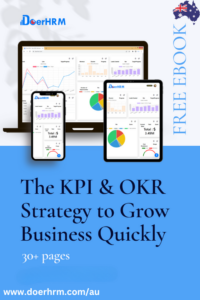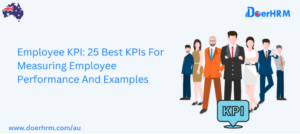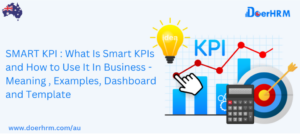One question you should ask yourself is, “What is the objective of your organisation?” The most logical response would be something along the lines of “to provide the greatest possible service to my clients so that I may expand my business and achieve my goals.”
But success is impossible without a committed and enthusiastic group of employees who each have clear roles and goals and understand how their efforts contribute to the whole.
And here is where smart performance management strategies come in, going far beyond successful employee acquisition strategies.
To begin, you must establish a regular system for evaluating and enhancing employee performance. KRAs and OKRs are useful tools for gauging progress in this regard.
Not only can you use these metrics to monitor employee development, but you can also use them to better integrate employees’ objectives and duties into the overall business plan.
Objectives are what map out the way for employees to reach the targeted KRAs, while KRAs give a framework and a clear grasp of the important drivers and results of employee performance.
KRAs and objectives work together to help you assess the team and keep track of employees’ development. When used properly, they may provide a lot of information about each team and help you optimize your performance evaluation.
Knowing that Key Results Areas (KRAs) and Objectives might improve employee performance, you may be wondering what steps to take next. The following are some guidelines that will help you begin using KRAs and setting objectives.
Take a broad perspective
You now see that a KRA ultimately comes down to the desired outcomes of a person, group, or organisation. Here are some first questions to think about:
- What position do I want my team to be in three months or a year?
- Does this fit in with my bigger corporate goals?
- How can I tell everyone on my team about this?
- How effectively can I monitor a person’s performance?
Establish both qualitative and quantitative KRAs
When you are clear on the outcomes you want to see in the near future, it is time to decide how you will monitor and assess them.
KRAs come in both qualitative and quantitative varieties. In areas of competence like negotiation, team communication, and decision-making, where evaluations on a numerical scale are difficult to give correctly but nevertheless necessary, qualitative KRAs might be used. Responsibilities like monthly sales goals or deliverables that can be quantified using particular criteria are included in quantitative KRAs. Choose whether your company should utilise qualitative or quantitative KRAs or a combination of the two. We advise combining the two since it will enable you to analyse employee performance more comprehensively.
Developing KRAs
Employee performance and growth are boosted by clearly defining expectations and duties. Make sure the following while creating KRAs:
- Relevant to the position and skill capabilities of the person or team
- Clearly articulated with a set time frame and objective
- Achievable, fair, and ambitious (around 4 or 5 KRAs for a quarter)
Keeping the above in mind as you write Key Result Areas will help you, as a manager, track progress, measure results, gain insights, and change responsibilities so that you can be successful in the future.
Optimizing KRAs and Objective Communication
Employees can understand their roles and the work they do when there is good communication. It also helps managers figure out what needs to be fixed and when and where they need to change how they deal with an employee’s performance. It should lead to growth and improvement and give employees more freedom. Here are some good ways to talk about goals and main responsibilities.
1) Onboarding: When a person is chosen for a job, their first instinct is to find out what is expected of them and how they can show their skills and strengths. Setting the right path with the right expectations and tasks from day one will make employees feel valued and help them focus on reaching their performance milestones.
2) Team meetings: Team meetings are a great way to make sure that everyone in your department has the same goals and key success factors.
3) One-on-one check-in: Individual meetings give the manager and employee a chance to talk about successes and problems and get feedback. They also make sure that expectations for performance and evaluations are clear.
4) Use software: Setting KRAs and objectives, keeping track of them, keeping track of progress, and evaluating them all might seem like a lot. You need tools that can grow as your needs get bigger. The software will also help make performance management more personalised because it will let managers see what each employee on their team is working on and judge how well they are doing at it. DoerHRM offers a KPI solution to help you focus on your goals and measure your performance. To learn more about how DoerHRM can help your team, schedule a free demo with our performance experts today!









